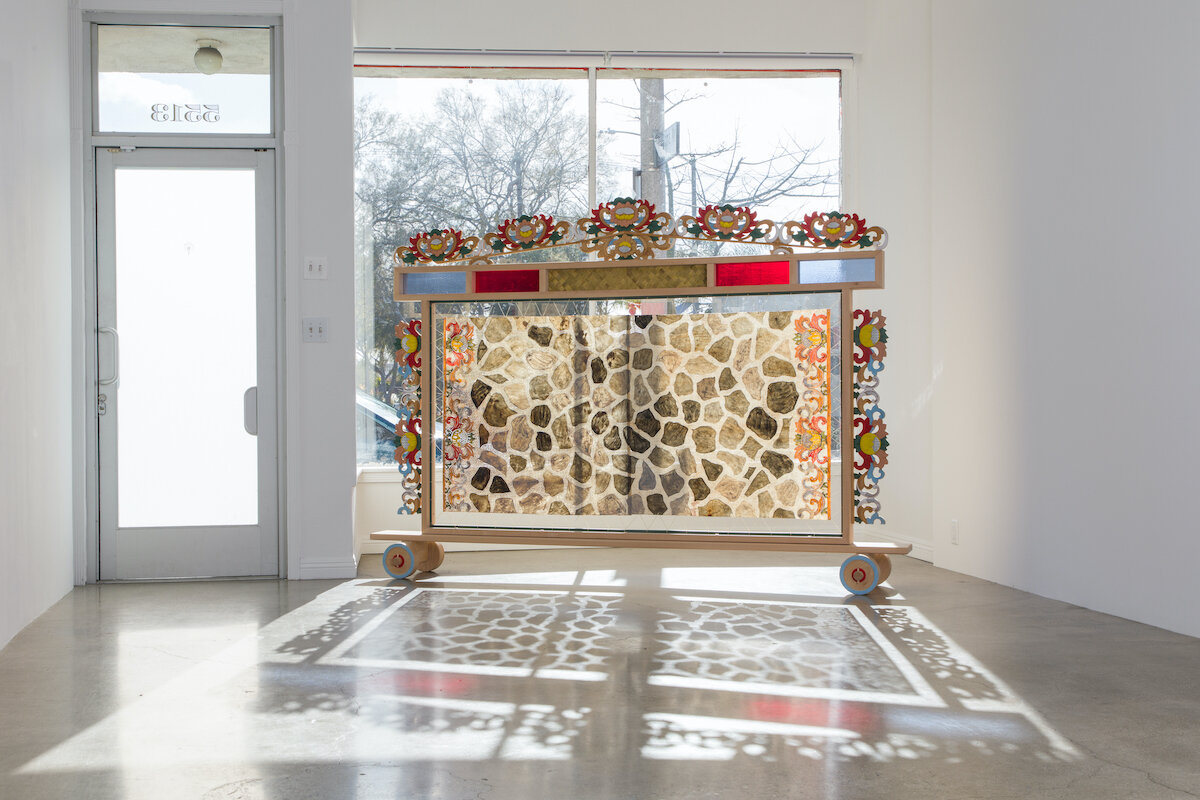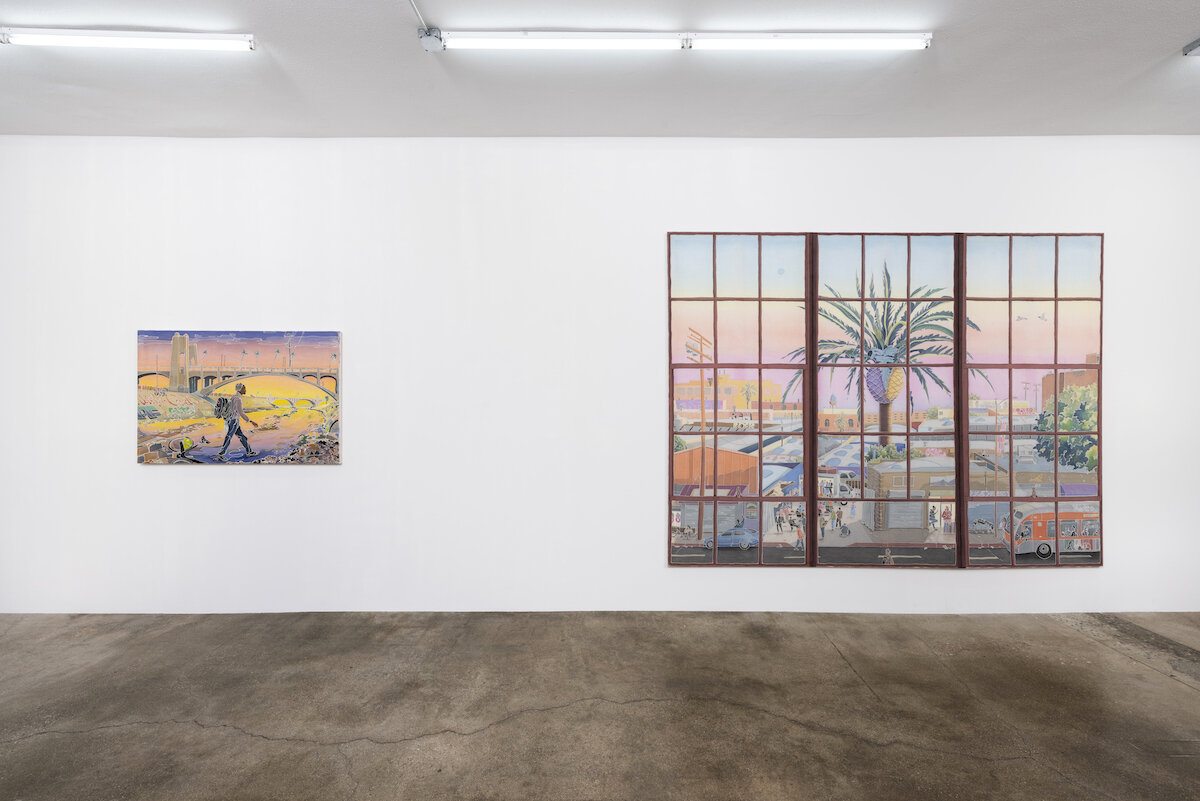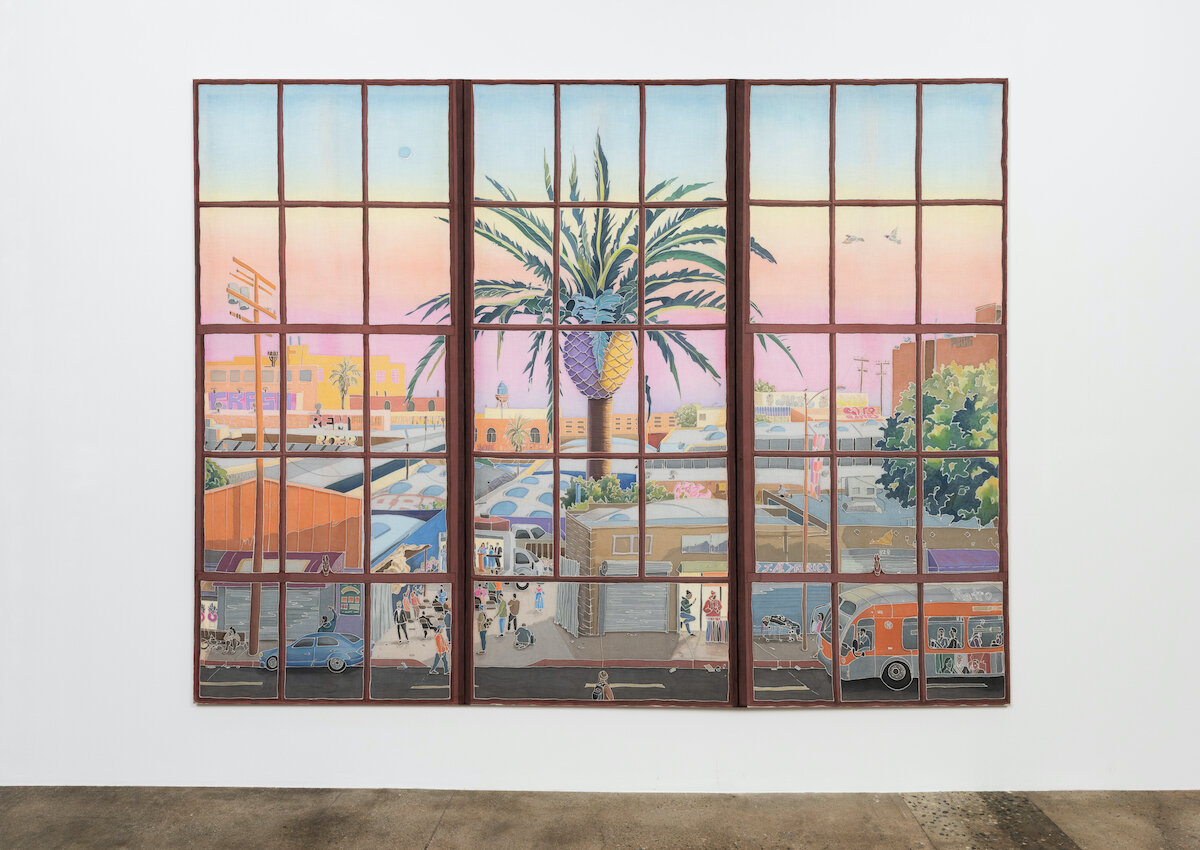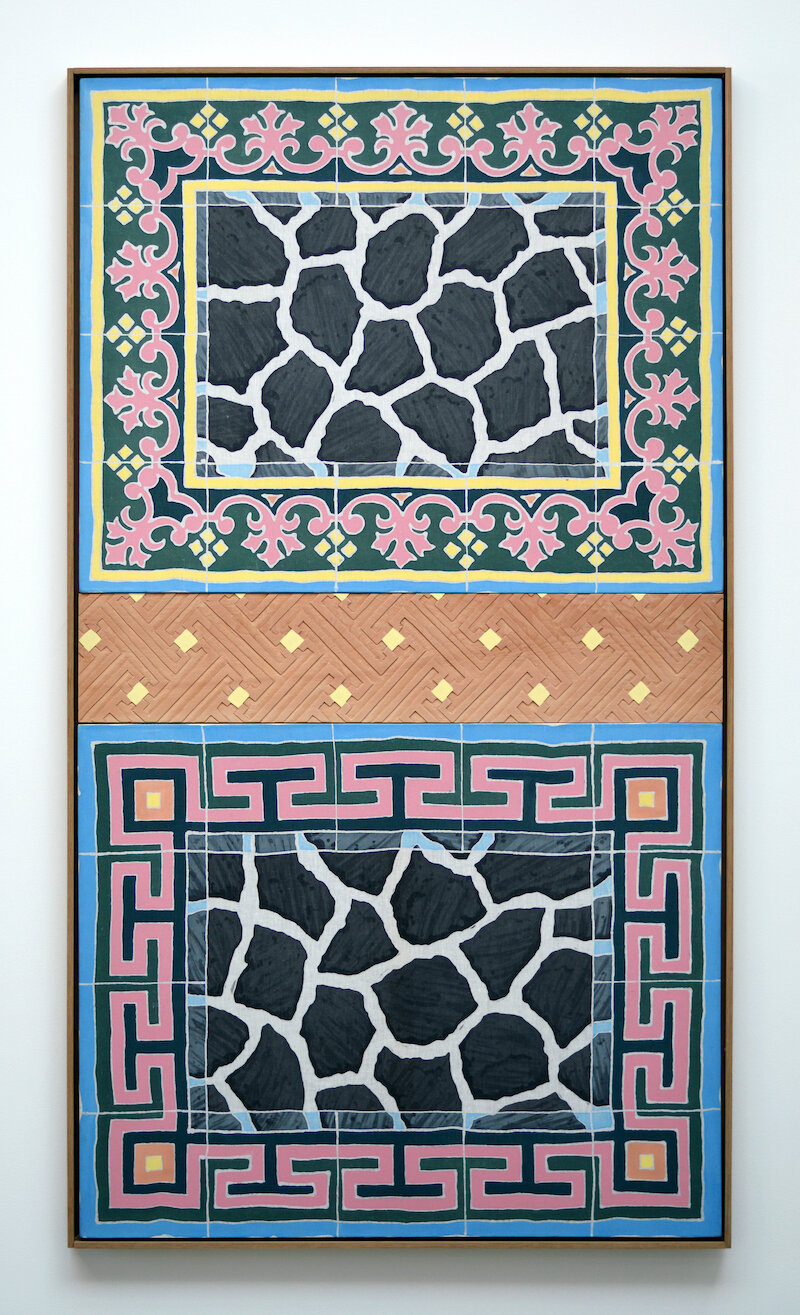Adam de Boer
Adam de Boer graduated with a BA in Painting from the College of Creative Studies at the University of California, Santa Barbara (2006) and an MA in Fine Art from the Chelsea College of Art, London (2012). Recent exhibitions include ISA Art + Design, Jakarta (2020); Hunter Shaw Fine Art, Los Angeles (2020/2018); Kristin Hjellegjerde Gallery, London; Elevator Mondays, Los Angeles (2018); World Trade Centre, Jakarta (2018); Art|Jog, Yogyakarta (2018/2015); Redbase Foundation, Yogyakarta (2017); Riflemaker, London (2016/2013/2011); Indonesian Contemporary Art Network, Yogyakarta (2014).
In 2017, de Boer was awarded a Fulbright research fellowship to Indonesia. Other grants include those from Arts for India, The Cultural Development Corporation, DC Commission on the Arts and Humanities, and The Santa Barbara Arts Fund.
For the past ten years de Boer has travelled throughout Indonesia to investigate his Eurasian heritage. His recent work employs imagery and traditional crafts from the region as a way to connect his artistic practice with those of his distant cultural forebears. He currently lives and works in Los Angeles.
Interview with Adam de Boer
Questions by Andreana Donahue
Can you tell us a bit about your background and where you grew up? In what ways have your early visual experiences and personal history led to art-making?
I grew up in Southern California as a first-generation American on my paternal side. My father is mixed-race Dutch-Indonesian, and was born a Dutch citizen in the Dutch East Indies, what is now called Indonesia. When Indonesia became independent following centuries of colonization, they jettisoned much of the colonial baggage to begin anew, and during that process my family lost almost everything and ‘repatriated’ to Holland, a home that neither they, nor anyone else in their lineage for generations prior had actually ever been to. It's all quite complicated, but essentially, they were a mixed colonial people who lost their colonial home and eventually found their roundabout way to Southern California in the 1960’s. Like many American immigrants during that post-war fallout, they choose to get on with their new lives and assimilate as best as they could. That process was so successful that the next generation, mine, grew up not knowing a thing about this amazing and painful history. My artwork over the past 10 years has been an attempt to learn and resuscitate it, an attempt to connect to that place by intermittently living in Java in order to study the language, history, and traditional crafts of the region and incorporate them into my painting practice. From craftspeople in and around Yogyakarta, Indonesia I’ve learned traditional batik textile design, low relief carving in teak wood and water buffalo hide, and the weaving of pandan grasses. I incorporate those into my work in various ways depending on the project. Essentially, they are all mixed-media hybrid artworks made by a cultural hybrid wrestling with that identity.
Where are you currently based and what initially attracted you to working in this community? Are there any aspects of this place that have surfaced in your work?
I currently live on the east side of Los Angeles. Beginning in 2011 with graduate school at the Chelsea College of Art in London, I spent about 8 years living and working abroad at various locations around the world for research, teaching jobs, residencies, and exhibitions. But after my Fulbright grant to Indonesia ended in 2018, I realized that I wanted to return home to Southern California to be closer to family and the landscapes that I grew up in. It seemed to me that Los Angeles was the only city to even attempt a career as an artist in this region, so that’s why I ended up here. Only very recently has imagery from Los Angeles come into my work. I’m currently making a kind of ‘batik diary’ of different vistas I encounter here.
Facing New Axes, Exhibition installation at Hunter Shaw Fine Art, Los Angeles. 2020.
Can you tell us about your studio and what a typical day is like for you? Do you share space or ideas with other artists while working, or is it a more solitary routine?
I share a storefront studio in Lincoln Heights with my girlfriend, Leah Ring, who is a furniture designer. There’s an imaginary line down the middle of the space and we try to keep to our own sides. :) We also try to keep bankers' hours, so a typical day would be us working from about 9:00 - 5:00, trying not to get in each other's way too much. Leah is on the phone a lot talking to vendors and clients etc. so I often wear headphones. So it’s not what one would think as a solitary routine, per se, it’s more like two solitary routines playing out in tandem.
What criteria do you follow for selecting materials? Do you prefer to maintain a narrow focus or work across diverse media? How do you navigate the limitations and possibilities that result from this path
Over the years I have studied all kinds of painting, sculpting, and metal leafing materials and processes. Engaging in traditional crafts and mixing them together into a kind of novel hybrid art object is essentially the strategy behind my work, so specific materials are needed for specific projects. Right now I’m making wax-resist batik paintings about Los Angeles as a way to link my Indonesian ancestry and years living and working in Java with my new life and landscape here. The conflict between imagery and material is the point of this body of work. Future projects, when they come around, will have different goals and so the materials will necessarily be different.
Riverwalker, 2019. Wax-resist acrylic paint and oil paint on linen, 22 x 54”.
Can you walk us through your overall process? How would you describe your approach to manipulating materials? What about decision-making and editing?
With these Los Angeles landscape batiks, I tend to work from sketches that I make around the city of vistas and stories that I find intriguing. From there, a more refined line drawing will be made to scale. That drawing is then enlarged via overhead projector and transferred to a linen support, and is then traced in molten beeswax with special pen-like tools from Indonesia called tjantings. From there the linen is stained in various ways in various colours with acrylic paints thinned out with lots of water. For example, in a recent painting about the window in my former downtown studio, Monday Evening Studio View, was painted using 47 distinct stain hues. Once that coloring process is done, which can take weeks, the linen is boiled in a giant pot to remove the wax. I then stretch the stained fabric over a standard wooden strainer and see what I have. Sometimes I’ll adjust certain areas with additional details in wax crayon or oil paint. It's all very painstakingly old school, but that’s kind of been the point, I want to help keep these traditional crafts alive in some small way. The medium is most of the message.
Can you talk about some of the ongoing interests, imagery, and concepts that have informed your process and body of work over time? How do you anticipate your work progressing in the future?
As I’ve stated above, much of what I’ve been referencing conceptually and visually has to do with Indonesian culture and the legacy of colonialism in the region. Nowadays, I’m adding to that body of work stories from my new home in Los Angeles; though in many ways, the places and their histories aren’t all that distinct. World history has shown that most nations and groups will conquer, colonize, enslave, and kill to enrich themselves and maintain the illusion of their primacy. Therefore, Indonesian history rhymes quite well with the American version, especially in its current status as an enormous democracy representing such diverse places and populations.
Over time, as I continue to live and work in Los Angeles, I would imagine that my work will drift further away from the specific Javanese allusions and more to local ones. But I really can’t say for now.
Do you pursue any collaborations, projects, or careers in addition to your studio practice? If so, are there connections between the two?
Since graduating with my BA I have worked at art museums in painting collections and exhibitions departments, as an assistant in an art conservation lab, and a general art handler working in the private sector. That work has taught me all kinds of manual skills and a facility with many tools, but more importantly, it has shown me that one's materials really matter. I’m very conscious of my artworks being physical objects that need to exist in the physical world. My art education taught me very little about materials and the stewardship of an artwork, so these have been clumsy and hard-learned lessons. I do my best to create work that is considered as a tangible object just as much as a conceptual one, objects that are strong and simple to ship, install, and endure for years to come.
Monday Evening Studio View, 2020. Wax-resist acrylic paint staining and crayon on linen, 90 x 120”.
As a result of the pandemic, many artists have experienced limited access to their studios or loss of exhibitions, income, or other opportunities. Has your way of working (or not working) shifted significantly during this time? Are there unexpected insights or particular challenges you’ve experienced?
My exhibition with Tammy Nguyen at Hunter Shaw Fine Art, Facing New Axes, opened on March 15, the day Los Angeles began ‘sheltering in place’. It was a big disappointment because these paintings, which are difficult to convey in photographs due to their distinct stained surfaces and are truly meant to be seen in person, were stuck in a gallery that would have no visitors. I thankfully never lost time in the studio though and so my ways of working haven’t really changed. What’s changed is an audience’s physical access to the work, but that’s not unique to my situation. Most artists are dealing with the same issue. We have to be patient.
In a time that seems to be marked by uncertainty, collective anxiety, and increasing social unrest, why do you think the perspectives and contributions of artists remain meaningful? Do you feel a natural relationship exists between your work (or the role artists play more broadly) and confronting established systems - of power, cultural institutions, or otherwise?
I believe that all art is political but the best art isn’t so didactic with its message. One has to let room for a viewer’s heart and intellect to finish the work. There’s a huge gap between George Grosz and Shepard Fairey, if you know what I mean. :) Art offers viewers an invitation for contemplation, a catalyst to think beyond words, beyond a fixed time and place, and so the normal associations one might have about the world can recede. And I believe that inside that special void, if one allows it to manifest, exists important meditative medicine. Art humanizes history and often offers beauty too, which I think is very important to human joy and fulfilment.
My recent work, in particular, addresses the history of colonialism and the hierarchical caste structures that it has engendered, so I suppose it directly confronts the established ways we think about power and belonging in society.
Room Screen Kardinal, 2019. Hand carved water buffalo hide, oak, woven pandan leaf, acrylic paint, stained glass, 72 x 145 x 2.5”.
Can you share some of your recent influences? Are there specific works - from visual art, literature, film, or music - that are important to you?
For the recent series I’ve been studying traditional Indonesian batik materials and motifs, it's such a long and rich history and it will take a lifetime to be really comfortable with the medium. I have also been spending lots of time looking at the prints and paintings of Felix Vallotton. In the summer of 2018 I saw his survey show at the Royal Academy and was incredibly moved, puzzled why this genius was previously so unknown to a larger audience outside of Switzerland and France. Anyway, I bought the catalog and have been attempting some ‘batik homages’ of his landscape paintings ever since.
Who are some contemporary artists you’re excited about? What are the best exhibitions you’ve seen in recent memory?
As ever, I’m very interested in what Victoria Miro has been showing this year. The online presentations of Maria Berrio’s enormous mixed-media collage work are enchanting. In truth, I haven’t seen many shows in person lately, but last week I visited David Kordansky’s expanded galleries and was so impressed by Linda Stark's show. I have no idea how those slick paintings are made, it’s almost like they are covered with thick paint like expert cake decoration, and that excites me. I also visited my friend Amir Fallah’s show at Shulamit Nazarian and love how the collage-like compositions, mixing images from his young son’s story books to ancient Iranian illuminated manuscripts, somehow straddle being absolutely personal and absolutely worldly. The show is authentic and vulnerable in a refreshing way.
What are you working on in the studio right now? What’s coming up next for you?
I’m currently preparing for a solo presentation with Hunter Shaw Fine Art at the NADA Fair in December. The fair won’t take place in Miami this winter so it will be an installation in downtown Los Angeles. I’m also preparing for a solo exhibition in May 2021 at ISA Art and Design in Jakarta.








